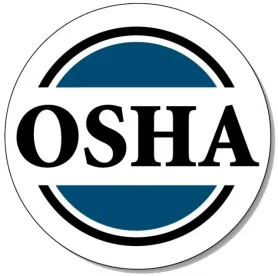Today, a copy of OSHA’s final electronic rule, “Improve Tracking of Workplace Injuries and Illnesses,” was made available for public inspection prior to release in the Federal Register on May 12, 2016. In November 2013, OSHA published a notice of proposed rulemaking to add electronic recordkeeping requirements that would require certain employers to electronically submit to OSHA injury and illness recordkeeping information on a quarterly and/or annual basis. Additionally, the proposed rule would establish a public searchable website where OSHA would make employers’ injury and illness records available to the general public. In August 2014, OSHA issued a supplemental notice of proposed rulemaking to include provisions that would prohibit employers from taking adverse [termination, reduction in pay, reassignment to less desirable position] action against employees for reporting injuries and illnesses.
The final rule is similar to the proposed rule and has two main elements, electronic submission and updates to how employers inform employees to report work-related injuries or illnesses.
Electronic Submission
The final rule requires electronic submission of Part 1904 recordkeeping records to employers depending on their size and industry.
-
Employers with 250 or more employees (including part-time, seasonal or temporary workers) in each establishment to electronically submit their 300, 300A and 301 forms to OSHA on an annual basis;
-
Employers with more than 20 but less than 250 employees in certain identified industries to electronically submit their 300A form on an annual basis;
-
Employers who receive notification from OSHA to electronically submit their 300, 300A and 301 forms to OSHA.
OSHA will then post the data from employer submissions on a publically accessible Web site. According to the final rule, OSHA does not intend to post any information that could be used to identify individual employees.
Employer Injury Reporting Policies
The final rule requires employers to develop employee injury and illness reporting requirements that met specific criteria. Specifically, employers must inform employees of the following:
-
Procedures for reporting work-related injuries and illnesses promptly and accurately. According to the final rule, a procedure is not reasonable if it would deter or discourage employees from reporting injuries or illnesses;
-
Employees have the right to report work-related injuries and illnesses;
-
Employers are prohibited from discharging or in any manner discriminating against employees for reporting work-related injuries or illnesses.
In the proposed rule, OSHA suggested that safety incentive policies and post-accident drug testing could be considered practices that would discourage employees from reporting work-related injuries or illnesses and therefore could be discriminating practices. In the final rule OSHA explains, “[T]he final rule does prohibit employers from using drug testing (or the threat of drug testing) as a form of adverse action against employees who report injuries or illnesses. To strike the appropriate balance here, drug testing policies should limit post-incident testing to situations in which employee drug use is likely to have contributed to the incident, and for which the drug test can accurately identify impairment caused by drug use.”
Regarding incentive programs, OSHA states, “Employee incentive programs take many forms. An employer might enter all employees who have not been injured in the previous year in a drawing to win a prize, or a team of employee might be awarded a bonus if no one from the team is injured over some period of time. Such program might be well-intentioned efforts by employers to encourage their works to use safe practices. However, if the programs are not structured carefully, they have the potential to discourage reporting of work-related injuries and illnesses without improving workplace safety.” “[T]o the extent incentive programs cause under-reporting, they can result in under-recording of injuries and illnesses, which may lead to employer liability for inaccurate recordkeeping. The latter concern is what is being addressed by this final rule’s prohibition on employers using incentive programs in a way that impairs accurate recordkeeping.”
Effective Dates
There are two effective dates in the final rule. The most immediate effective date will be around August 12, 2016 for the provisions regarding employee injury reporting policies. Specifically, the requirements to inform employees they have a right to report a work-related injury and the prohibition from discharging or otherwise discriminating against employees for reporting work-related injuries or illnesses. These provisions will be effective 90 days after publication in the Federal Register.
The requirements relating to the electronic submission of Part 1904 recordkeeping forms become effective January 1, 2017. Establishments with 250 or more employees must submit information from their 2016 form 300A by July 1, 2017. And staring in 2018, these same employers will be required to submit information from all 2017 forms (300A, 300, and 301) by July 1, 2018. Beginning in 2019 and every year thereafter, the information must be submitted by March 2. Establishments with more than 20 but less than 250 employees in designated industries must submit information from their 2016 form 300A by July 1, 2017, and their 2017 form 300A by July 1, 2018. Beginning in 2019 and every year thereafter, the information must be submitted by March 2.
According to OSHA, those states that operate under a state OSHA plan will have to adopt requirements that are substantially similar within six months. Additional information regarding the final rule can be found on OSHA’s website. OSHA has provided a specific “resource page” regarding the final rule. Jackson Lewis is still in the process of reviewing the final rule and will provide updates as necessary.




 />i
/>i
